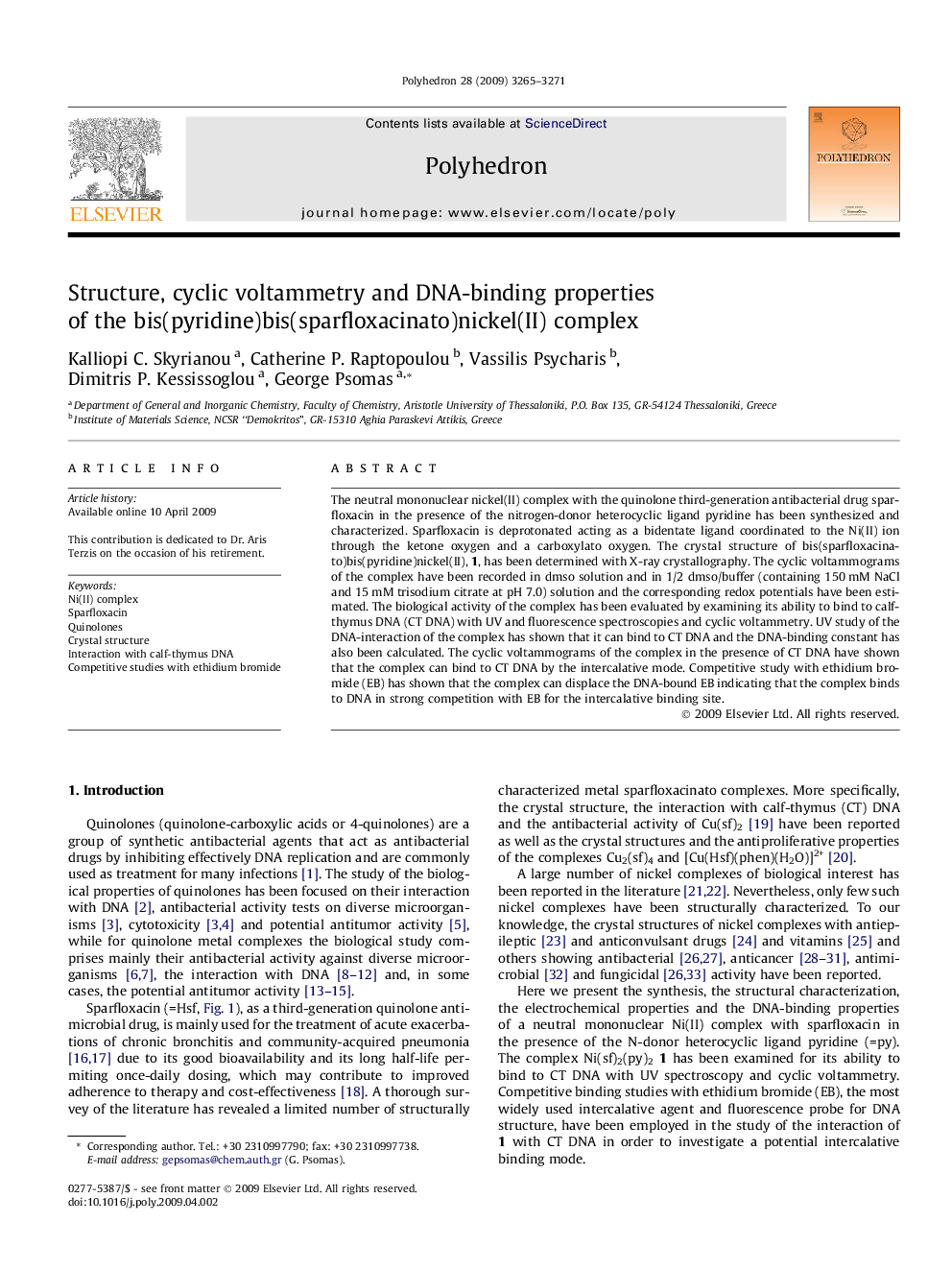| Article ID | Journal | Published Year | Pages | File Type |
|---|---|---|---|---|
| 1337404 | Polyhedron | 2009 | 7 Pages |
The neutral mononuclear nickel(II) complex with the quinolone third-generation antibacterial drug sparfloxacin in the presence of the nitrogen-donor heterocyclic ligand pyridine has been synthesized and characterized. Sparfloxacin is deprotonated acting as a bidentate ligand coordinated to the Ni(II) ion through the ketone oxygen and a carboxylato oxygen. The crystal structure of bis(sparfloxacinato)bis(pyridine)nickel(II), 1, has been determined with X-ray crystallography. The cyclic voltammograms of the complex have been recorded in dmso solution and in 1/2 dmso/buffer (containing 150 mM NaCl and 15 mM trisodium citrate at pH 7.0) solution and the corresponding redox potentials have been estimated. The biological activity of the complex has been evaluated by examining its ability to bind to calf-thymus DNA (CT DNA) with UV and fluorescence spectroscopies and cyclic voltammetry. UV study of the DNA-interaction of the complex has shown that it can bind to CT DNA and the DNA-binding constant has also been calculated. The cyclic voltammograms of the complex in the presence of CT DNA have shown that the complex can bind to CT DNA by the intercalative mode. Competitive study with ethidium bromide (EB) has shown that the complex can displace the DNA-bound EB indicating that the complex binds to DNA in strong competition with EB for the intercalative binding site.
Graphical abstractThe synthesis, the crystal structure, the electrochemical properties and the interaction with calf-thymus DNA of the novel mononuclear complex of the third-generation quinolone antibacterial agent sparfloxacin with Ni(II) in the presence of nitrogen-donor heterocyclic ligand pyridine, bis(sparfloxacinato)bis(pyridine)nickel(II), are presented.Figure optionsDownload full-size imageDownload as PowerPoint slide
